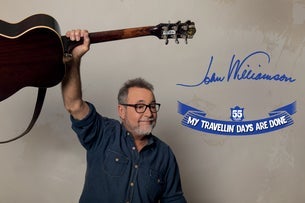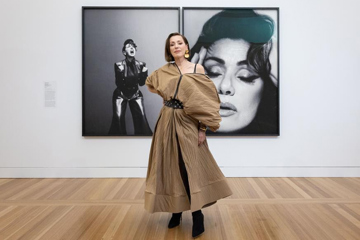Report Estimates Commercial Radio Worth $1B While Music Biz Demands More Money
"I’m not thinking of me after 53 years in the business; it’s for our future creators, keeping them going."
A new report from Deloitte Access Economics put the value of the Australian commercial radio sector at close to $1 billion ($973 million), based on data provided by nine networks.
This comes at a time when recorded music amped up its latest push – beginning in June – to change decades-old laws to get hundreds of thousands of dollars more in royalty payments from radio for playing sound recordings.
This week (Wednesday, August 9), ACT independent Senator David Pocock introduced the Fair Pay for Radio Play Bill. It attempts to remove the caps that saw commercial radio pay just $4.4 million in 2021-22 – equal to 0.4 per cent of gross industry revenue – while the ABC forked out $136,000.
Behind The Billion Dollar Figure
The report, Connecting Communities: The Economic and Social Contribution of Commercial Radio and Audio in Australia, was commissioned by the industry body Commercial Radio & Audio (CRA).
Its CEO, Ford Ennals, said, “(This) is the first time in 100 years of broadcasting that we have evaluated the economic contribution of radio and its role in delivering trusted, local content to listeners all over the country.
Don't miss a beat with our FREE daily newsletter
“These figures show how important it is to have a sustainable Australian radio industry that delivers great audio content free of charge to everyone, everywhere.”
The $973 million figure came from $670 million directly and $303 million indirectly.
Most ($634 million) of the economic contribution was from wages, with radio directly employing 4,270 people and a further 2,300 indirectly. The gross operating surplus was $339 million.
The report noted, “The indirect value added captures the flow-on economic activity associated with purchases of intermediate goods and services by the industry.
“For instance, the production of content and payments to artists for music licensing and royalties.”
A high percentage of radio’s indirect contribution came from motion picture and sound recording, contributing almost $27 million in value, added through activities such as music publishing.
The report maintained: “Commercial radio contributes $37 million annually in royalty payments to artists. This figure includes payments to music licence and copyright bodies Australian Performing Rights Association (APRA) and Phonographic Performance Company of Australia (PPCA).”
It further estimated radio triggered $82 million worth of charitable contributions.
Campaign Against The Caps
In 1968, the Government legislated the rate of payment by the ABC to record companies was 0.5¢ per head of the Australian population (then 12 million). This was long before the arrival of triple j (which programs 60% local music) and Double J.
In 1969, radio bosses convinced the ruling Liberal Party that unless payments to the music industry were kept at 1% of their gross annual revenue, their industry would do a Titanic.
The music industry has long argued that these rates should have been adjusted for inflation.
It estimates that the $136,000 the ABC paid to sound recordings owners should now be 7.26 cents per person.
The PPCA, which collects broadcast monies on behalf of the music industry, points out it “only receives about one-tenth of the radio broadcast revenue paid to APRA for the use of the musical work, which is not constrained by any cap. The issue affects artists and record labels across Australia.”
The industry has long been battling to get more money out of radio. Under John Howard in 2006, Attorney-General Phillip Ruddock announced their removal, but this never came to fruition.
In 2011 the PPCA went to the High Court, arguing the caps were unfair. Legal mumbo-jumbo followed but ultimately provided no joy for the biz.
Five years later, it won a Copyright Tribunal case forcing radio to pay additional fees for recordings used on livestream simulcasts.
In June 2023, the industry started to lobby new Attorney-General Mark Dreyfus to scrap the caps altogether and went to the Copyright Tribunal to double the royalties from the radio.
Response To Pocock Bill
“Political will is all that stands in the way of change that will see real results for our recording artists,” said PPCA CEO Annabelle Herd.
“Legislation should not restrict the value of a sound recording, particularly when it puts our local recording artists at a disadvantage in their home market. The time for change is now.
“This issue does not need to be kicked down the road and lost in yet another review or enquiry. Numerous reviews have recommended the existing restrictions are unjustified and unfairly disadvantage Australian recording artists.”
AIR CEO Maria Amato stated, “We support commercial radio”, adding that with its strong revenues of over $685 million in FY23, as well as 14% audience growth over the past five years … we must be given the opportunity to negotiate a fair rate for radio’s core product – recorded music – that is in line with the rest of the world.”
Maggie Collins, Executive Director of the Association of Artist Managers, called the Pocock move “also in line with the Revive policy, which states the Government is ‘committed to maintaining a strong copyright framework that works in concert with other legal and policy mechanisms…to support the success and vibrancy of Australia’s cultural and creative sector’.”
Twenty artist managers, including John Watson, Jaddan Comerford, Andrew Stone, Paul Piticco, Andrew Stone, Jodie Regan, Simone Ubaldi, Claire Collins and Charlotte Ried, threw their support, as did artists such as Peking Duk, Briggs, Josh Pyke and John Williamson.
Artists Respond
John Williamson
In a handwritten letter addressed to radio station executives, Williamson wrote, “I wonder where you would be without music? I reckon over 50 years, you’ve had a very good run paying next to bugger all for the use of our property which is not always cheap to produce.
“Don’t hate me for asking for more, guys. It’s all about being fair dinkum. I’m not thinking of me after 53 years in the business; it’s for our future creators, keeping them going.”
Briggs
Speaking in a statement, Briggs added, “This outdated legislation doesn’t reflect the amount of work that goes into creating a song. Remove the cap and pay artists fairly.”
Adam Hyde (Peking Duk)
Hyde said, “Radio is not the real issue here. The issue is an outdated limit set by Government over 50 years ago. Times have changed a lot, and it is so important to get this right for all recording artists to be fairly paid for their music.
“In a world where it seems creativity is constantly being overlooked financially, it is time we take a step towards making things right, or at the very least a tiny bit better than they are at the moment.”
Josh Pyke
Pyke concluded, “As an artist, I fully support the campaign to remove the radio caps from the Copyright Act. These regulations are very outdated and limit the royalties that broadcasters pay to rights holders and artists for the use of sound recordings.
“Put simply; radio is not paying a fair market rate to use the music that they’ve built their product around. This seems entirely unfair, and it’s certainly not the case in other countries. Removing these caps will ensure that we are fairly compensated for our work and that the Australian music industry can continue to thrive and grow.”
Radio’s Argument
The CRA’s Ford Ennals argues the commercial radio sector already pays almost $40 million in separate royalty fees to songwriters, composers and publishers through fees to APRA.
Losing the caps, he warns, will affect investment in digital radio to counter streaming platforms.
The Deloitte report noted that with 85% of radio listeners regarding music as their main content, radio provides promotion for Australian music through airplay, interviews and sponsorships of gigs and tours.
Radio “plays a key role in music discovery, broadcasting 160,000 hours of Australian music or 2.7 million songs each year, equivalent to 7,400 spins per day.”
Deloitte added: “While the industry faces ongoing competition from internet-based media competitors, growth in the online broadcasting market will enable radio stations to reach wider geographical areas and tailor content to more niche audiences.
“The increased variety in modes, services and types of content will help provide significant benefits for listeners.
“This includes commercial radio networks’ production of catch-up podcasts, with Australia recently overtaking the US as one of the most advanced podcast markets in the world.”
Data from the report shows 17 million listening to commercial radio and podcasts in 2022 and 83% tuning in each week, 74% of Australians think radio and audio build a community, 54% would try a product advertised on the radio or endorsed by their favourite radio personality, and 59% regard as “a trusted source” its news and current affairs content (which ran 42,000 hours last year).
The report quoted IBIS World figures that broadcast revenue is on track to rise by an estimated annualised rate of 0.7% over the five years to 2028-29.
It concluded: “Audiences also anticipate listening to more radio and audio over the next 12 months, with 94% of respondents to the citizen survey expecting to listen at the same level or more frequently than they currently do.”
Read the Deloitte report here.
Related Gigs












